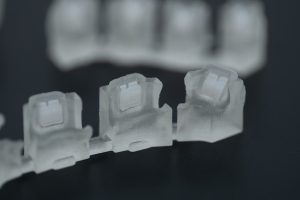Orthodontic treatment involves the application of different forces on teeth to place them in their ideal positions and can be achieved with braces or sequential aligners (such as Invisalign) by the friendly team at Mehta Orthodontics. Tooth extraction will only be recommended by Dr Mehta if it is absolutely necessary for the success of orthodontic treatment.
What is a tooth extraction?
Tooth extraction is the removal of a permanent (adult) or deciduous (baby) tooth by a general dentist or oral surgeon. When a child’s deciduous tooth is naturally lost or pulled out, a permanent tooth will come through in its place to be its permanent successor. However, when an adult tooth is extracted, a space is left where the tooth was removed. In orthodontic treatment in Sydney, the remaining space can be used in many ways to correct the bite and improve the alignment of the teeth.
When would extraction be recommended for orthodontic treatment?
At Mehta Orthodontics, extraction will only be discussed as part of the overall orthodontic treatment plan for one of the following reasons:
- To create space: this is one of the most common reasons healthy teeth are extracted for orthodontic reasons. When teeth are crowded, space is required to achieve the optimal alignment, bite, smile and facial balance.
- To create facial balance: sometimes extractions may be recommended to enhance a patient’s appearance and profile. For example, if teeth are straightened in a severely overcrowded mouth without extractions, it may result in excessively protrusive teeth or lips creating an unfavourable facial profile.
- To improve a “bad bite”: occasionally extraction of adult teeth may be recommended to improve the patient’s occlusion (bite).
- To remove compromised teeth: dental disease such as tooth decay or gum disease may require tooth extraction. If completed in conjunction with orthodontic treatment, the orthodontist can close the space with the adjacent healthy teeth.
- To remove an “extra tooth”: some patients develop more teeth than the normal set of 32. In this case, extraction of the supernumerary or extra tooth, is usually indicated.












